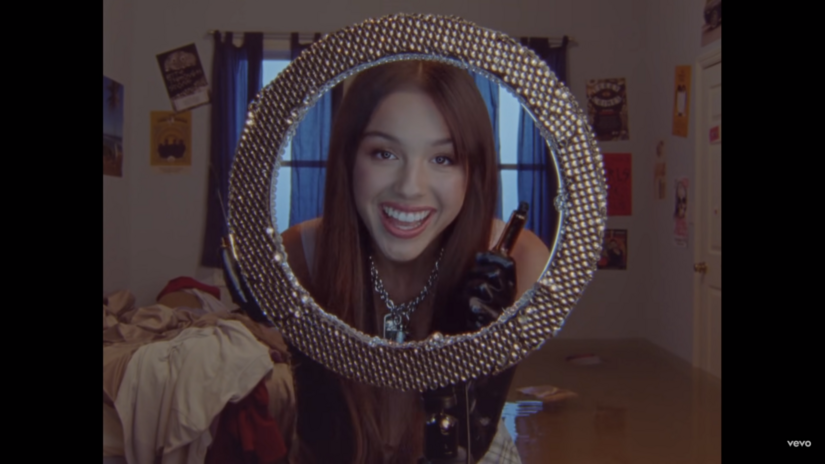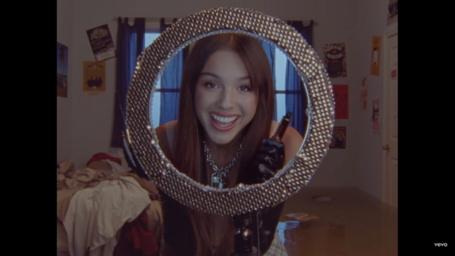Last week, top K-pop group Le Sserafim released their highly anticipated EP, Easy. For me, the EP was cool. I particularly loved how “the music festival vibe” was present throughout the whole project and I can’t wait to see the corresponding Coachella stages to these songs later this year.
However, there was one thing that stood out to me while I was listening: it was way too short! More specifically, the EP contained around 5 songs, each song was about 2 minutes, and in total, it took about only 13 minutes to get through the entire thing.
Unfortunately, Le Sserafim is not the only K-pop group that has started to release such short projects. In the K-pop realm alone, there was some disappointment around how K-pop group NewJeans’ very first EP, Get Up, was 12 minutes despite having 5 songs, and how none of the songs were longer than 2 minutes.
Meanwhile, in the Western pop music scene, artists like PinkPantheress have popularized the short song releases; if you look far enough back, there are jokes about how PinkPantheress concerts would only ever be 6 minutes long as she only released music in the 1-2 minute range. Lil Yachty’s Poland, which blew up on Tiktok and later ended up on the Billboard Top 100, was only 1 minute and 38 seconds long. And, even veteran artists like Taylor Swift are releasing shorter songs: the average song length on Speak Now was 4 minutes and 47 seconds while on Midnights, the average length of a song was about 3 and a half minutes.
But why? Some point to streaming services being the reason. According to a report created by the Recording Industry of America, “in 2015, streaming overtook digital downloads as the music industry’s biggest source of revenue in the US. And streaming has dominated ever since: In 2015, it accounted for 34.3% of revenue, and that’s increased to 75% in 2018. In the process, many artists have adapted to the way their music is consumed.”
Jeff Ponchick, the founder of the Repost Network, a digital distributor that connects artists to platforms like Spotify and SoundCloud, also commented on how streaming services have greatly changed the way artists earn money: “One million streams on Spotify generates about $4,000…after royalties have been split amongst everyone, including the writers, producers, and performers, that doesn’t leave labels which much revenue. Therefore, since one stream typically earns the same no matter the track length, there’s an incentive to create shorter songs to garner as many streams as possible.”
Record executives also believe that shorter songs with catchy hooks in the beginning can lead to people not using the very easy to access “skip” bar on streaming platforms. More specifically, Tayla Elitzer, a former Capitol Records A&R, states that “people (in the industry) are acutely aware of skip rates and how that relates to success on streaming services. Tracks with lower skip rates are prioritized by the platforms, and a short song is less likely to be skipped.”
Additionally, the argument can be made with the rise of platforms like TikTok, labels are encouraging artists to release shorter songs for the sake of virality. In fact, on their podcast Switched on Pop, Charlie Harding and his co-host Nate Sloan analyzed the new structure of viral TikTok pop songs and made the following observation of many new viral pop songs. “Gone are fade outs and intros; now hooks come right in at the start of the song and choruses arrive earlier and earlier. The traditional verse, pre-chorus and chorus of songwriting is usurped,” Harding said.
However, this new trend in song composition for the sake of more streams and TikTok virality cuts out one thing that I love about pop songs in general: bridges, which are a transition element between verses and choruses. They help to make pop songs seem less repetitive by including either a key, lyric, chord progression, instrumental, or tempo change. For me, a bridge is essential to keep pop songs interesting and ear-wormy without aging them too quickly. And I am not the only one who misses them; songwriter Erika Nuri Taylor who was nominated for a 2008 Grammy for the song “When I See U” recorded by Fantasio Barrino, commented once, “a lot of songs don’t have bridges anymore, which is really disappointing for me because a bridge in a song is so special. It’s one of my favorite parts of writing. Streaming music has definitely affected that.”
Luckily, it’s not all pop artists that are saying goodbye to the bridges. Slower ballads like “Driver’s License” by Olivia Rodrigo is one the best examples, I think, of properly utilizing a bridge to keep a song from sounding too similar throughout. And in the K-pop realm, NMIXX’S “Run for Roses” has the coolest bridge I have heard recently in a K-pop comeback in a while, and it just felt so satisfying to hear the girls hit some insanely high notes and include vocal runs that would have never been included if the song was just a couple of hooks smashed together.
With the more recent trend towards shorter songs however, I am getting exhausted. While I want pop artists to be able to have breakthrough hits and make money, I hope that they can still release tracks in the traditional pop format with the most delectable pre-choruses and bridges for me to obsess over.


